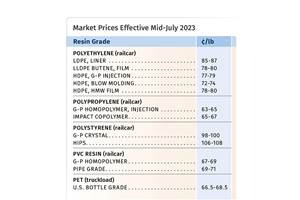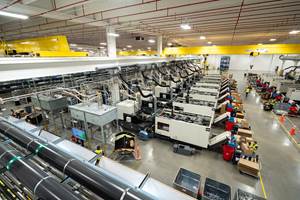Wood on Plastics: Construction Outlook: Stable in ’12, Growing Again in ’13
Trends in recent months suggest that these sectors are stabilizing, but overall home prices remain weak, and there are millions of foreclosures set to hit the market in 2012. This will hold prices down through the coming year.
The Great Recession officially ended more than two and a half years ago, but the recovery in the construction sector has not yet begun. The housing crash and foreclosure crisis are still not over. Regardless of whether you are looking at sales of existing homes or the number of new houses under construction, the numbers remain depressed. Trends in recent months suggest that these sectors are stabilizing, but overall home prices remain weak, and there are millions of foreclosures set to hit the market in 2012. This will hold prices down through the coming year.
This also means that the overall U.S. economic recovery will continue to struggle to gain any real momentum for another year or so. Even with the recent plunge in prices, a home is still the most important asset for most American households. And eroding personal wealth leads to reluctance to spend for many consumers. If declining household wealth was the only impediment to the recovery, it would be substantial, but there are two other negative effects of declining house prices.
First, it means that local and regional banks are more reluctant to lend. Banks have to raise their capital reserves when their loan portfolios suffer a high number of defaults, and their fists tend to tighten when it comes to lending their precious cash. Also, many small business owners use their homes as collateral when they wish to borrow and expand their businesses. So even if their credit rating is perfect and the banks are willing to do business with them, there is less asset value available for them to borrow against.
Second, most local governments are financed primarily through property taxes based on house prices. When those prices fall, tax revenues decline. In aggregate, local governments are this nation’s largest employers. Declining house values have resulted in a steady decrease in the number of teachers, city workers, policemen, etc. in recent years.
Even if all goes well, we are still about a year away from a housing recovery. The Obama administration recently restructured its Home Affordable Refinance Program (HARP), which will provide some help. The new rules will mean that approximately 10% of the roughly 11 million homes headed for foreclosure will be able to refinance.
Our forecast is for the total construction sector, both residential and non-residential, to start a reliable expansion in 2013. House prices will start to rise again, and businesses will also increase their investment in new structures. The rate of household formation has held steady in recent years, so there will likely be a surge of pent-up demand once the economic recovery starts to gain some traction.
And this brings up one final point. The crisis in the housing and real estate industries will likely end in another year or two, but the effects of bursting the housing bubble will remain for years to come. There will be no more easy credit, and lenders will likely require a 20% down payment. New homes will likely be a bit smaller in square footage, less expensive to purchase and maintain, and definitely more energy-efficient.
WHAT IT MEANS TO YOU
•Efficiency, efficiency, efficiency. The housing sector in the U.S. collapsed, but global prices for energy products and building materials did not. In fact, they went higher.
•Government has less money for infrastructure. Suburbs and strip malls are less useful. The future trend will be back to walkable communities.
•Homes will not only become more efficient in their use of energy and materials, they will increasingly generate their own energy through the use of solar, wind, geothermal, etc.
Related Content
PS Prices Plunge, Others Appear to Be Bottoming Out
PS prices to see significant drop, with some potential for a modest downward path for others.
Read MoreLyondellBasell Showcasing End-Use Applications in 5 Key Markets
NPE2024: LYB is highlighting applications in circularity, mobility and transportation, food and medical, consumer goods/lifestyle, and infrastructure/building and construction.
Read MoreArchitectural Mesh Made from Covestro’s Bioattributed PC
Kaynemaile’s new RE8 Architectural Mesh will deliver an ISCC Plus certified sustainable share of up to 88% of its architectural product.
Read MoreIPEX Opens Injection Molding Facility in North Carolina
The pipe and fittings manufacturer’s new 200,000-square-foot facility represents a $200 million investment and will create 150 jobs.
Read MoreRead Next
For PLASTICS' CEO Seaholm, NPE to Shine Light on Sustainability Successes
With advocacy, communication and sustainability as three main pillars, Seaholm leads a trade association to NPE that ‘is more active today than we have ever been.’
Read MorePeople 4.0 – How to Get Buy-In from Your Staff for Industry 4.0 Systems
Implementing a production monitoring system as the foundation of a ‘smart factory’ is about integrating people with new technology as much as it is about integrating machines and computers. Here are tips from a company that has gone through the process.
Read MoreBeyond Prototypes: 8 Ways the Plastics Industry Is Using 3D Printing
Plastics processors are finding applications for 3D printing around the plant and across the supply chain. Here are 8 examples to look for at NPE2024.
Read More











